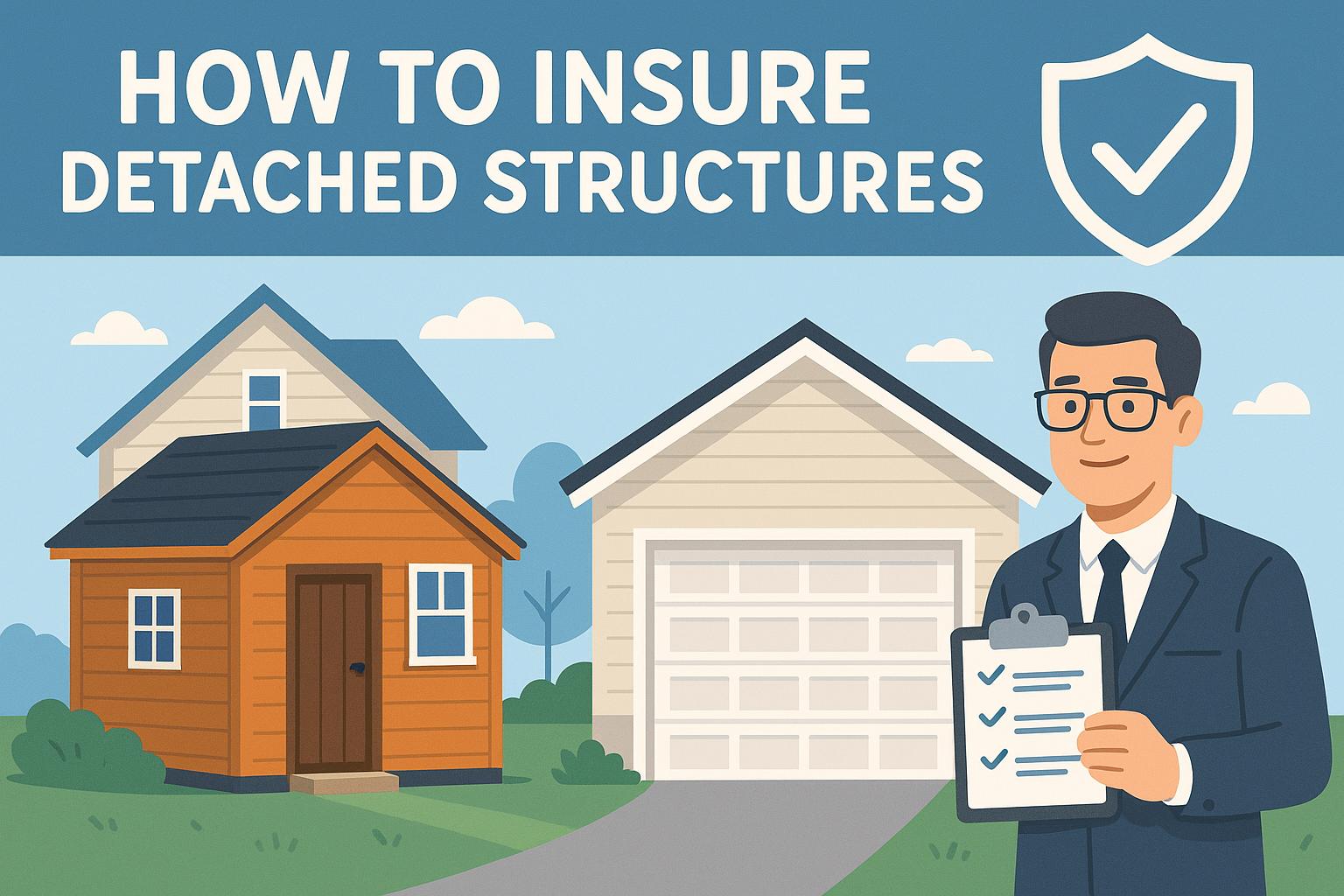Understanding Insurance for Detached Structures
When it comes to insuring detached structures, understanding how your homeowners insurance policy handles these areas is crucial. Detached structures, often referred to as other structures, are usually included in a standard homeowners insurance policy. However, it’s significant to note that the specifics of coverage can vary depending on both the insurer and the policy itself. Recognizing these nuances can help homeowners make informed decisions and secure the required financial protection for their properties.
Coverage Amount for Detached Structures
Standard homeowners insurance policies typically incorporate coverage for detached structures, computed as a percentage of your dwelling coverage limit. This limit often amounts to around 10% of the total dwelling coverage. For instance, if your home is insured for $300,000, then your detached structures, like a garage or shed, would be covered for approximately $30,000.
However, if you own substantial or particularly valuable detached structures, this pre-determined coverage might not suffice. In such cases, it is prudent to contact your insurance agent and explore options for additional coverage. Enhancing your policy could ensure peace of mind and financial protection in case of an unforeseen event.
Types of Structures Covered
Policies for detached structures typically encompass a range of buildings. These include:
– Sheds
– Detached garages
– Gazebos
– Fences
– Barns
Given this scope, it’s imperative to verify your policy documents or speak with your insurer to ascertain the specific types of structures covered. Additionally, understanding the definitions and terms within your insurance policy is critical for accurate coverage.
Factors to Consider When Insuring Detached Structures
Deterring the right insurance for your detached structures involves examining several determinants:
Value of the Structure: It’s crucial to ensure the insurance coverage aligns with the replacement value of your detached structures. This step can help avoid under-insurance, which could leave you financially vulnerable in the event of significant damage or loss.
Usage: The manner in which you utilize your detached structure shapes your coverage needs. If a garage is transformed into a home office or rental unit, for example, additional coverage or a distinct form of insurance might be necessary. Ensuring appropriate usage-based coverage is paramount for comprehensive protection.
Construction Material: The materials employed in constructing your detached structures can influence the insurance rates you’re charged. Generally, structures built with fire-resistant materials might be eligible for discounts, potentially reducing overall insurance costs.
Additional Coverage Options
If analysis of the standard coverage reveals inadequacy, consider several additional coverage options to bolster financial security:
– Increased Other Structures Coverage: Opting for increased other structures coverage allows you to raise the coverage limit for detached structures. This enhanced coverage safeguards against potential financial shortfalls in the event of extensive structural damage.
– Specialized Insurance: If your detached structures are exceptionally high-value or possess unique characteristics, exploring specialized insurance options might be necessary. These policies can be custom-tailored to address specific risks pertinent to the structures in question.
How Claims Work for Detached Structures
In the unfortunate event of damage to your detached structures, the process for filing a claim usually mirrors that of a claim for your primary residence. Begin by documenting the damage extensively and taking comprehensive photographs. Notify your insurer promptly to start the claims process.
Additionally, remember that your typical deductible applies when filing claims for detached structures. There is a possibility that a separate deductible specific to detached structures might exist, reinforcing the need to carefully review your policy details.
Navigating the intricate insurance landscape for detached structures demands a thorough understanding of your policy coverages. Preparing adequately requires evaluating your needs and consulting with professionals to adapt your policy accordingly. Whether you’re contemplating constructing a new structure or reassessing existing coverage, proactively tailoring your insurance policy can ensure you receive essential protection and peace of mind. This strategic approach will help safeguard your assets and mitigate the financial burdens that might arise from unexpected incidents.
